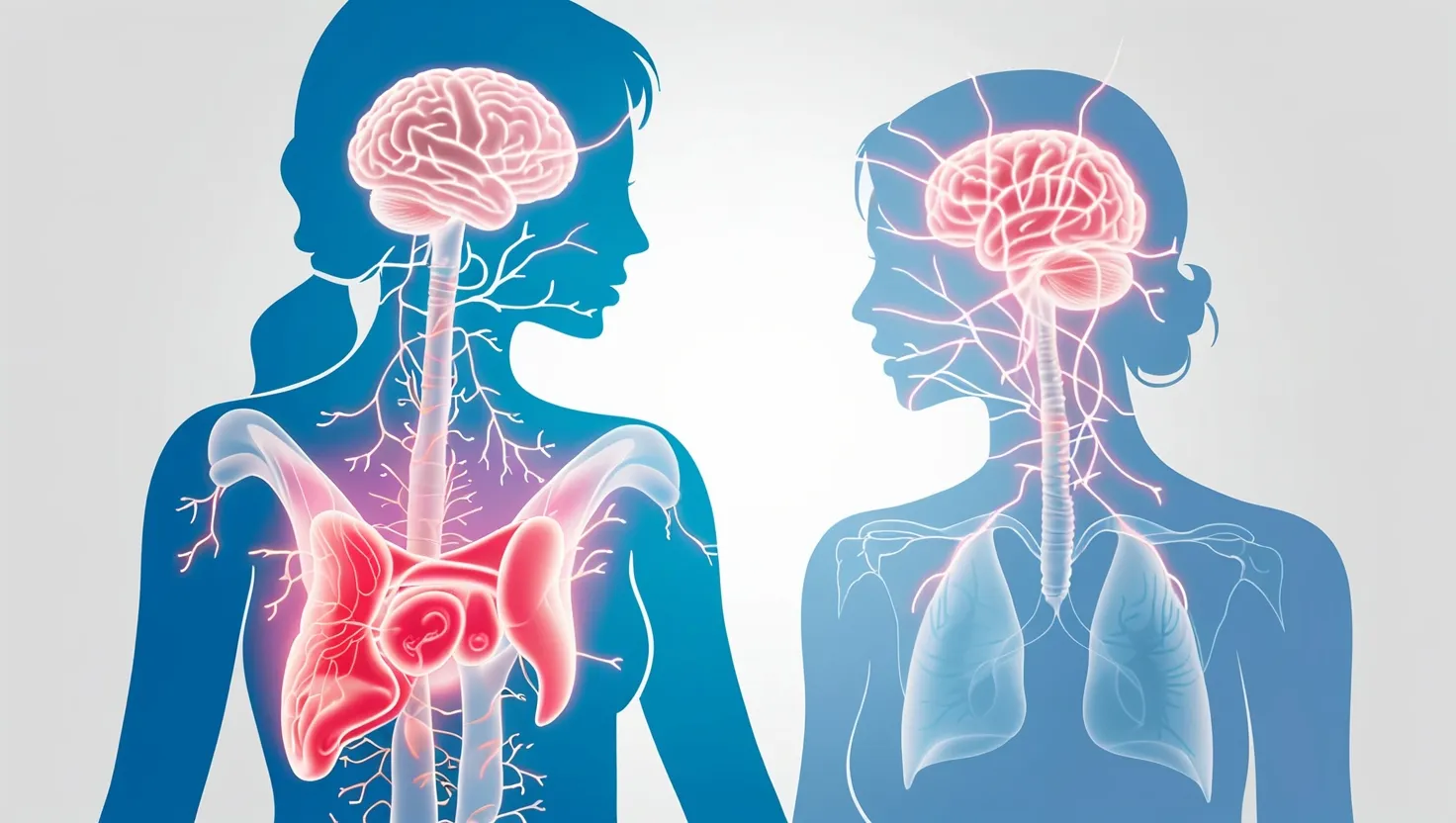Can the body behave as if it’s pregnant, even without a baby? This question sounds like it belongs more to the realm of fiction, yet the medical world has thoroughly documented such cases. I’m continually struck by how the boundaries between body, mind, and biology aren’t as neat as we imagine. The phenomenon known as phantom pregnancy seems to illustrate this uncertainty in a manner both profound and puzzling.
Imagine showing all the signs of pregnancy: missing period, growing belly, swollen and tender breasts, even sensations of a baby moving inside. Unique among these cases are the ones where the signs aren’t confined to imagined feelings or wishful thinking. Even doctors, equipped with careful exams and blood work, witness the unmistakable physical hallmarks—enlarged uterus, lactation, hormonal shifts—that in almost every situation mean there’s a fetus. But here’s the twist: ultrasounds reveal an empty uterus. There’s no embryo, no tiny heartbeat. Yet the woman’s physiology is locked into the full rhythm of pregnancy.
How does this happen? Most people think of “phantom pregnancy” and imagine a condition born of powerful desires or psychological stress, but these extreme cases tell us something else: the body’s capacity for imitation is staggering. Medical professionals have sometimes even felt “fetal movement” during examination, only to confirm later the complete absence of a pregnancy. It raises a striking question for us: if not an embryo, then what turns on the powerful machinery of gestation?
Consider the story of a woman I once read about whose belly began to swell just as it would with a real pregnancy. Her periods stopped, her breasts changed—and not just mildly. They filled with milk, a process known clinically as galactorrhea, something that, in most other cases, only follows the birth of a child or enormous hormonal shifts. She experienced labor-like pains, and her doctors measured changes in her cervix and uterus that matched closely to what we see in typical pregnancies. To paraphrase Mark Twain, “Truth is stranger than fiction, but it is because fiction is obliged to stick to possibilities.”
In some of these rare cases, lab tests don’t falsify the pregnancy story. Hormones like hCG (human chorionic gonadotropin) and prolactin, which typically rise during pregnancy, mimic the same pattern seen in gestation. How can this be possible without a placenta or embryo to spark this cascade? Scientists have, so far, ruled out lab error or tumors as causes in these thoroughly investigated cases. When doctors search for explanations, they typically look toward miscarried embryos, early absorption, or hidden pathologies. Yet with time, spontaneous resolution is what occurs—the body quietly, sometimes dramatically, reverts to its pre-pregnancy state, leaving clinicians and patients equally perplexed.
What makes this phenomenon even more remarkable is that the transformations aren’t subtle or fleeting. Uterine enlargement in such cases has been found to reliably track with the “expected” timeline of gestation—six weeks, twelve weeks, sometimes progressing to the full forty. Breasts swell not from fat, but from genuine glandular development. In some archived case reports, blood levels of estrogens and progesterone have shown the distinctive arc that only pregnancy creates. How does the body read a signal that, in fact, isn’t coming from an embryo?
I find myself circling back to a single theme: our brains and bodies are deeply interconnected, in ways we do not yet comprehend. The classic argument has been that such pregnancies are “pseudocyesis”—a reaction of the body to powerful psychological needs. Traditionally, that explanation centered mostly on the mind’s influence—a desperate desire for a child, or an overwhelming fear of infertility, somehow “convinces” the body to follow suit.
But these rare cases reveal something more mechanical. The evidence: not every patient has these psychological hallmarks; some are even surprised when doctors first declare them pregnant. In these situations, the nervous system and hormonal axes seem to conspire without any obvious emotional drive. The body steps through the motions so faithfully that only modern imaging and hormone panels tell us there’s no baby.
To quote Arthur Conan Doyle: “Once you eliminate the impossible, whatever remains, no matter how improbable, must be the truth.” Researchers have crossed tumors, hidden pregnancies, hormone-secreting cancers, and psychiatric delusions off the list. What remains? Some posit a spontaneous disruption in the body’s axis of reproductive hormones, the delicate push-and-pull between the hypothalamus, pituitary, ovaries, and other glands. This network, which orchestrates everything from the growth of eggs to the timing of periods, may sometimes “short-circuit” in ways we haven’t mapped.
Could a slight, temporary misfire in these systems prompt the brain to “announce” pregnancy with all its physical signatures, even as the ovaries and uterus begin their work despite the absence of a true pregnancy signal? In rare moments, perhaps yes. It’s a biological paradox: the scaffolding of pregnancy without the foundation.
Some of the most compelling evidence comes from the peculiar timing of these events. Have you wondered why many cases seem to occur after major life changes—loss, grief, or extreme stress? The body, under extraordinary duress, sometimes unearths behaviors and syndromes otherwise dormant. Reports of men experiencing similar sympathetic symptoms in “sympathetic pregnancy” with their partners, while anecdotal, underscores just how broad this mind-body link might be.
I often ask: Should we view these cases only as failures of biological engineering, or as an indication of a more flexible, adaptive system than we thought? For example, in nature, there are mammalian precedents—some animals display hormonal fakes of pregnancy (even “lactating” in the absence of birth) during periods of group stress or environmental change. Could we share some of these genetic blueprints?
Let’s linger on an unsettling but fascinating question: If the body can so precisely replicate every symptom and sign of pregnancy in the absence of a fetus, what other conditions might hinge on similar misfires or “phantom blueprints” triggered deep in our biology?
I return to the experiences of women who have lived through this mystery. Many are left bewildered, even after careful medical explanation. Think about the role of experience: a woman feels her baby “kick,” others—including doctors—can put their hands on the abdomen and sense movement. Later, it’s clear: Nothing was there. The threshold between subjective experience and objective reality blurs.
“Everything we call real is made of things that cannot be regarded as real,” wrote Niels Bohr, a reminder that perception and reality often wrestle for center stage. Phantom pregnancy hints toward a quiet drama in the brain—the very same neural territories that represent bodily states, sensation, and memory, perhaps misfiring in concert with hormonal crosstalk.
Medical investigations have made progress. Advanced MRI imaging and blood analysis have identified clear, measurable changes matching genuine pregnancy—thicker uterine walls, changes in pituitary and ovarian hormone output. But even more surprising is that, in these situations, the recovery can be just as sudden. Sometimes, advice and reassurance suffice to “reset” the system. Other times, physiological changes persist for months, requiring close supervision.
Why does the body sometimes abandon the elaborate choreography, returning hormone levels to normal, restoring menses, and rebalancing the reproductive axis almost overnight? Perhaps our internal feedback systems, designed to monitor the absence or presence of precise embryonic signals, finally assert themselves with enough evidence to shut off the process.
If the phenomenon forces us to rethink the rigid separation between psychological and physiological factors, it also opens the door to new models of care. A patient in this situation doesn’t need only psychological support or medical management; she needs recognition of the complexity and sincerity of the experience. Here’s a question to pause on: How do we, as a society and as medical professionals, validate an experience where even science struggles to explain the root cause?
I think of the words of William James: “The greatest discovery of my generation is that a human being can alter his life by altering his attitudes.” Even so, phantom pregnancy reminds us that sometimes, the body can alter its chemistry, its anatomy, and even its observable biology, without intent, conscious desire, or outside intervention.
In conclusion, phantom pregnancy, with its documented and tangible physiological changes absent a fetus, stands as a testament to the body’s marvelous capacity for imitation and mystery. Even as science advances to unravel more of the threads—nervous system pathways, endocrine triggers, genetic predispositions—there remains a margin for the unexplained. The old medical truism seems apt: not everything that is measurable is knowable, and not everything that is knowable can be measured.
So, the next time you consider the boundaries of what’s possible inside the human body, remember: pregnancy—real, simulated, or phantom—may have lessons to teach us not just about biology, but about the hidden complexity within all of us.






